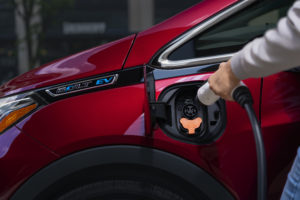
Global auto leaders temper electric vehicle expectations
By onAnnouncements | Market Trends | Technology
Enthusiasm for near-term electric vehicle (EV) growth is waning among global auto executives, a report indicates.
KMPG surveyed more than 900 leaders for its Global Automotive Executive Survey and found the majority to be less optimistic about EVs than they were a year earlier.
In 2021, executives predicted that emission free vehicles would capture between 20 and 70% of the market by 2030. Last year, the forecast dropped with auto leaders saying it’s now likely that EVs will comprise just 10 to 40% of market share by the end of the decade.
The survey found leaders were particularly bearish about EV sales growth in India due to poor infrastructure, and in Japan because of a focus on hybrid vehicles.
Interestingly, the number of executives who believe EVs can achieve widespread adoption by 2030 increased, growing from 77% in 2021 to 82% last year.
A number of luxury OEMS, including Mercedes-Benz, Bentley, Lexus, Audi have said they’ll go all-electric by 2030. Non-luxury automakers like Honda, Hyundai and Ford are moving in the same direction although with 2040 targets to sell all or mostly carbon-free models.
“Auto executives are extraordinarily optimistic about the future, but at the same time their confidence is tempered by the need to turn automotive dreams into reality,” Gary Silberg, KPMG’s global head of automotive, said in the report.
Russell Hensley, McKinsey Center for Future Mobility co-chair, said the complexity of producing EVs at scale, coupled with driver reluctance to make the switch, have slowed the electric transition.
“It’s quite complex to actually design, develop, and produce electric vehicles at scale when you have a vehicle fleet so dominated by the internal-combustion engine, and all the systems in the world for mobility have been indexed toward the internal-combustion engine,” Hensley said during an interview.
“Adoption has not gone faster because there is a hesitation in pivoting from something that is so trustworthy in the internal-combustion engine to something that is a relatively new technology. And, with vehicles being the second-largest investment that a household makes, it’s obviously a decision that takes much consideration.”
Other obstacles for manufacturers include a lack of raw battery materials as demand for batteries is expected to rise by 900% by 2030, according to UP.Partners’ newly released The Moving World report.
Automakers will also struggle to produce EVs at scale that are affordable for the average consumer due to the ballooning costs of key components such as lithium, cobalt, and nickel, the report said.
“Converging exponential technologies are disrupting aviation, EV adoption is accelerating at rapid pace, and electric 2- and 3-wheelers are displacing 1 million barrels of oil a day. Yet, the mobility sector has emerged as the largest CO2 contributor in the U.S. As many opportunities as there are in this rapidly transforming industry, there are even more challenges to be addressed,” said Cyrus Sigari, Co-Founder and Managing Partner of UP.Partners. “Transforming the moving world by moving people and goods cleaner, faster, safer, and at lower costs on the land, in the air, on the sea, and in space is a shared mission among governments, investors, and entrepreneurs alike. It is our hope that industry leaders and their teams will use the Moving World Report as a guide to confront the challenges and unlock the opportunities that lie ahead.”
Image:
A 2020 Chevrolet Bolt charging port is shown. (Provided by Chevrolet)
